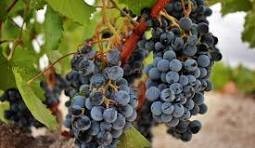Spain is synonymous with wine tradition, and one of the great advantages of its wines is that they offer value for...

Wine in Spain: A Journey through its History, Grapes and Regions
Spain, a country renowned for its sunshine, vibrant culture, and celebrations, is also one of the world’s epicenters of wine. With over 1 million hectares of vineyards—the largest wine-growing area on the planet—it offers unparalleled diversity, from youthful, vibrant wines to decades-aged reserves. But how did this tradition begin? Which grapes and regions define its essence?
The History of Spanish Wine: Millennial Roots
Spanish winemaking traces its origins to the Bronze Age (4000–3000 BCE), when the Phoenicians introduced viticulture to the Iberian Peninsula. However, it was during Roman rule that grape cultivation flourished, particularly in regions like Tarraco (Tarragona) and Hispania Baetica (Andalusia).
In the Middle Ages, Christian monasteries preserved winemaking knowledge during the Reconquista. By the 19th century, the phylloxera plague that devastated French vineyards positioned Spain as Europe’s key wine supplier. The 20th century brought modernization, marked by the creation of Denominaciones de Origen (D.O.) and the rise of innovative wineries that now rival the world’s finest in quality.
Native Grapes: The Soul of Spanish Wine
Spain is home to over 600 grape varieties, though only a few dominate production. Here are the stars:
- Tempranillo: Spain’s "queen grape," the backbone of Rioja and Ribera del Duero wines. Elegant, with notes of red berries and tobacco.
- Garnacha (Grenache): Ideal for bold reds and rosés, prominent in Aragón and Priorat.
- Albariño: Synonymous with crisp, mineral-driven whites from Rías Baixas (Galicia).
- Verdejo: Aromatic and vibrant whites from Rueda (Castilla y León).
- Monastrell: Produces intense reds in sun-soaked regions like Jumilla (Murcia).
Others like Mencía (Bierzo), Bobal (Utiel-Requena), and Palomino (used in sherry) complete this mosaic.
Spain’s Role in the Global Market
Spain ranks as the world’s third-largest wine producer, trailing only Italy and France. Its true strength lies in its unbeatable quality-to-price ratio, offering premium wines at more accessible prices than its European neighbors. Spain also leads in bulk wine exports and organic production, with over 20% of the world’s organic vineyard area.
Regions like Rioja, Ribera del Duero, and Priorat have gained international acclaim, while Cava (sparkling wine) and Sherry (fortified wine) are global ambassadors of Spanish culture.
Types of Spanish Wines
- Reds: From Galicia’s young “jovens” to Rioja’s complex reservas.
- Whites: Galician Albariños, Rueda’s Verdejos, or Penedès’ historic whites.
- Rosés: Fruity styles from Navarra and Catalonia.
- Sparkling: Catalonia’s Cava, crafted using the traditional method.
- Fortified: Sherry from Jerez (fino, amontillado, oloroso) and Málaga’s sweet wines.
- Dessert Wines: Raisin-style wines like Pedro Ximénez (PX) or Valencia’s Moscatels.
Key Wine Regions: North to South
- Rioja (La Rioja): Iconic, elegant reds aged in oak barrels.
- Ribera del Duero (Castilla y León): Structured, age-worthy Tempranillo (locally called Tinto Fino).
- Priorat (Catalonia): Bold Garnacha and Cariñena from old vines on volcanic soils (llicorella).
- Rías Baixas (Galicia): Albariño paradise, perfect with seafood.
- Jerez (Andalusia): Birthplace of sherry.
- Cava (Catalonia): Sparkling wines from Macabeo, Parellada, and Xarel·lo.
- La Mancha (Castilla-La Mancha): Vast region known for affordable and organic wines.
- Emerging areas: Bierzo (Mencía), Canary Islands (volcanic wines), Txakoli (Basque Country).
Conclusion: A Toast to Diversity
Spanish wine mirrors its land: diverse, passionate, and steeped in stories. From century-old wineries to young winemakers experimenting with biodynamic techniques, Spain reinvents itself while honoring its roots. Whether it’s a Rioja reserva, a crisp Albariño, or a glass of fino by the sea, every sip celebrates over 3,000 years of legacy.





Leave a comment